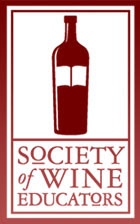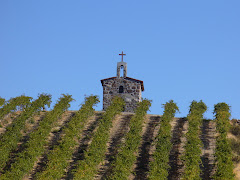 As the year draws to a close, it seems almost a tradition to think about sparkling wine, although as a big fan, I could drink it anytime. Yet with the New Year’s festivities fast approaching, I thought it prudent to offer up some down and dirty points to remember when searching for a sparkling wine.
As the year draws to a close, it seems almost a tradition to think about sparkling wine, although as a big fan, I could drink it anytime. Yet with the New Year’s festivities fast approaching, I thought it prudent to offer up some down and dirty points to remember when searching for a sparkling wine.The biggest thing to think about is the difference between sparkling wine and Champagne. What is the difference? Nothing, except geography. Champagnes can only be called Champagne if they come from the Champagne region of France. Everything else, even it comes from another part of France, is sparkling wine.
And there is Cava from Spain, Prosecco and Franciocorta from Italy, Sekt from Germany and Austria, and of course good ol’American sparklers. Many Champagne houses actually have wineries in California (such as Chandon, Roederer, and Taittinger).
While vintage plays an integral part in your selection of still wines, the year is not always as significant with sparkling wines, due to the fact that most often these wines are a blend of several vintages in order to maintain a consistent product. While these wines should be referred to as “multi-vintage” wines, they are almost always known as “non-vintage.” However, there are vintage sparkling wines. The French government actually designates a vintage for the wineries of Champagne, which signifies that a particular year was extraordinary enough to note it on the bottle. Not every year is a vintage year, which is why you often see wines such as Dom Perignon skip a vintage or two.
Dryness is arguably the most important aspect of choosing a sparkling wine. Dryness is broken down into 6 levels, from driest to sweetest: Extra Brut (also known as Brut Sauvage or Brut Natural), Brut, Extra Dry, Sec, Demi-Sec and Doux. The most common wine is Brut, which has a residual sugar content of around 1.5%. Extra Dry, oddly enoughly enough is typically sweeter, or possessing more residual sugar than a Brut. The most popular Extra Dry is Moet & Chandon White Star NV. Sec, Demi-Sec and Doux are more like dessert sparklers, with Demi-Sec being the most popular of the three. Some of the most recognized Demi-Secs are Moet & Chandon Nectar NV, Piper-Heidsieck Sublime NV and Schramsberg Cremant Demi-Sec. Doux is the sweetest, with a residual sugar content of 5% or higher. It is pretty rare, and usually only found at the winery in which it is produced.
Sparkling wines are wonderful food wines, yet more often than not, are simply passed off as aperitif wines and toasting wines. It’s a shame. If you really want some decadence, try lobster with butter and a nice sparkler. It is a heavenly pairing. Or try it with sushi. I think you’d be surprised, or more to the point, amazed, at the combination.
I will have a few Champagne reviews and some more information on Champagne production over the next two weeks, so stay tuned.











No comments:
Post a Comment